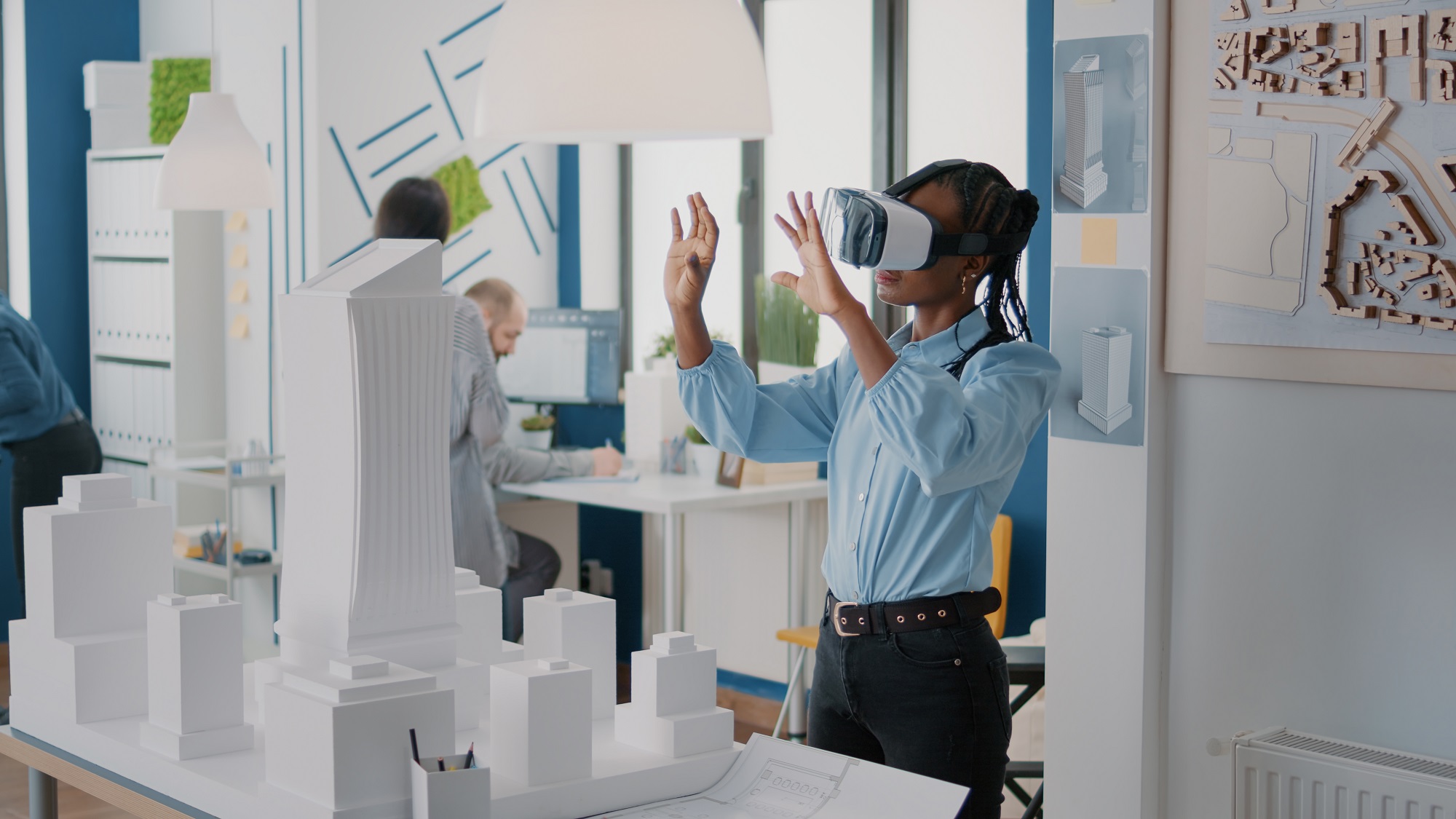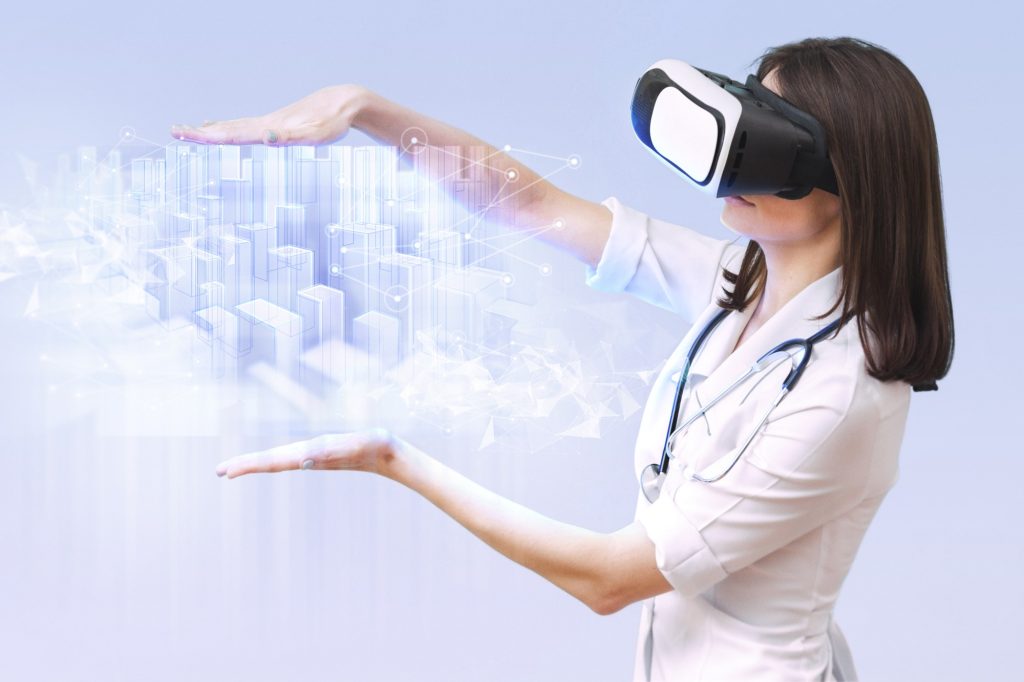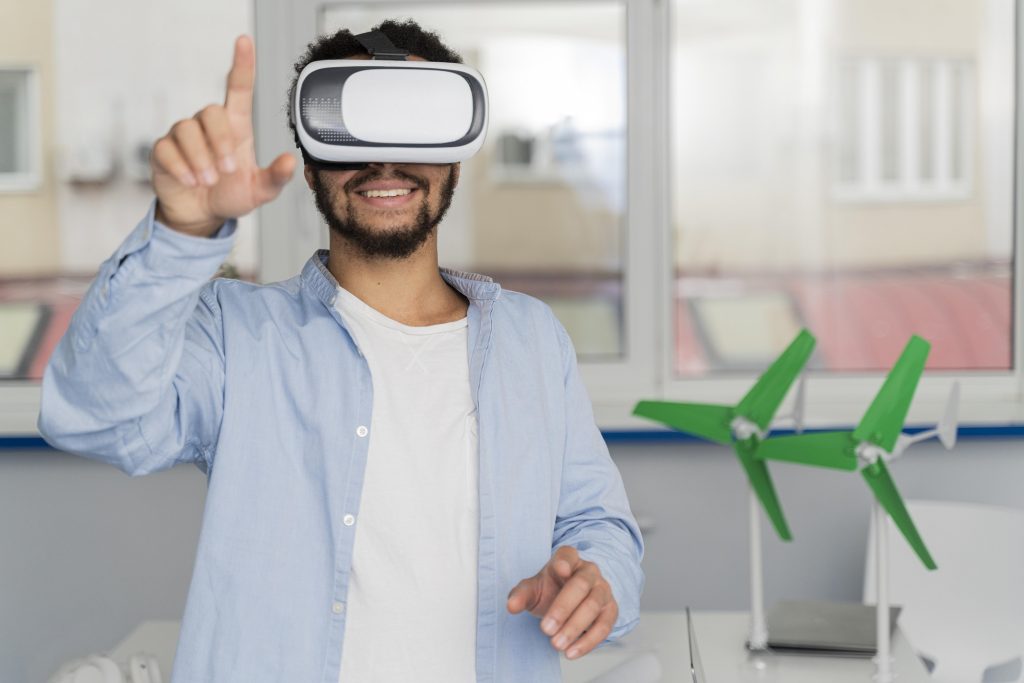
Revolutionizing Property Development with Virtual Reality
In today’s fast-paced world, property developers are constantly seeking innovative ways to attract buyers and investors. One technology that is revolutionizing the industry is virtual reality (VR). With its immersive and realistic experience, VR is changing the game of property development.
Advantages of using virtual reality in property development
Virtual reality offers numerous advantages for property developers. One of the key benefits is the ability to showcase properties that are still in the planning stage. Traditionally, developers had to rely on 2D blueprints or scale models to give potential buyers an idea of what the finished property would look like. However, these methods often failed to capture the true essence of the space, leaving buyers with limited information to base their decisions on.

By embracing VR, developers now have the ability to create virtual walkthroughs of properties. Potential buyers can put on a VR headset and virtually explore the property, experiencing every detail as if they were physically present. This immersive experience allows buyers to get a true sense of the space, its dimensions, and its potential. They can walk through different rooms, explore the layout, and even interact with virtual objects. This not only saves time and money on physical showings, but also enables buyers to make better-informed decisions.
Furthermore, virtual reality allows developers to create customizable experiences for potential buyers. With VR technology, buyers have the freedom to visualize their dream home. They can choose different materials, rearrange furniture, and even alter the layout to suit their preferences. This level of customization empowers buyers and helps them make more confident decisions before the construction even begins. It also minimizes the risk of buyer’s remorse, as they have a clear understanding of what the final product will look like.
The impact of virtual reality on the customer experience
Virtual reality has a profound impact on the customer experience in property development. By offering immersive and interactive virtual tours, developers can provide potential buyers with a unique and engaging experience. Instead of relying on their imagination or static images, buyers can step into the virtual world and explore the property as if they were physically present.
This enhanced customer experience not only captivates buyers but also builds trust and confidence in the developer. By leveraging VR technology, developers demonstrate their commitment to transparency and providing buyers with an accurate representation of the property. This can significantly improve the buyer’s perception of the developer’s credibility and increase the likelihood of a successful sale.
In addition, virtual reality enables developers to showcase properties to international buyers without the need for them to travel. With VR, buyers from around the world can virtually visit properties and make purchasing decisions remotely. This expands the potential market for developers and allows them to reach a wider audience. It also eliminates geographical barriers and makes property buying more accessible and convenient for global buyers.
Case studies of successful virtual reality property development projects
Several successful virtual reality property development projects have already made waves in the industry. One notable example is the “The Grove” development in California. The developer partnered with a VR technology company to create immersive virtual tours of the luxury homes. Potential buyers could put on a VR headset and explore the properties from the comfort of their own homes. This innovative approach attracted a lot of attention and generated significant interest in the project, leading to a successful sales campaign.
Another case study is the “Xanadu” development in Singapore. The developer utilized VR technology to create a virtual showroom where potential buyers could explore different unit layouts, finishes, and views. This allowed buyers to get a realistic sense of the property and make informed decisions. The use of VR not only streamlined the sales process but also resulted in higher conversion rates and reduced the number of physical showings required.

These successful case studies demonstrate the power of virtual reality in property development. By embracing VR technology, developers can create memorable experiences for potential buyers, generate greater interest in their projects, and ultimately achieve higher sales conversions.
How virtual reality is revolutionizing the design and planning process
Virtual reality is not only transforming the buying experience but also revolutionizing the design and planning process in property development. Traditionally, architects and designers would rely on 2D drawings and physical models to convey their vision to clients and stakeholders. However, these methods often fell short in conveying the true essence and spatial qualities of a design.
With VR technology, architects and designers can now create virtual environments that accurately represent their designs. This allows clients and stakeholders to experience the space in a more immersive and realistic manner. They can walk through the virtual environment, interact with objects, and get a true sense of the scale and proportions. This level of detail and realism enables better communication and understanding between all parties involved in the project.
Moreover, virtual reality enhances the collaborative nature of the design and planning process. With VR, different stakeholders can come together in a virtual space and make decisions in real-time. They can discuss design options, test different configurations, and evaluate the impact of design choices before any physical construction takes place. This streamlines the decision-making process, reduces the risk of errors and rework, and ultimately leads to more efficient and cost-effective project delivery.
Overcoming challenges in implementing virtual reality in property development
While virtual reality offers numerous benefits for property development, there are challenges that need to be addressed for successful implementation. One of the main challenges is the cost associated with VR technology. Investing in high-quality VR hardware and software can be expensive, especially for smaller developers with limited budgets. However, as VR technology becomes more mainstream and accessible, the costs are expected to decrease, making it more affordable for developers of all sizes.
Another challenge is the need for skilled professionals who can create high-quality virtual experiences. Developing VR content requires expertise in 3D modeling, animation, and programming. Finding individuals with these skills can be challenging, but as the demand for VR content creators grows, so does the availability of skilled professionals in the market.
Additionally, there is a learning curve for potential buyers in using VR technology. Some buyers may be unfamiliar with VR headsets and may find it daunting to put them on and navigate the virtual environment. However, with proper guidance and support from developers, buyers can quickly adapt to the technology and fully enjoy the immersive experience it offers.
The future of virtual reality in property development
The future of virtual reality in property development is promising. As technology continues to advance, VR experiences will become even more immersive and realistic. Developers will have access to more sophisticated tools and software, enabling them to create virtual environments that are indistinguishable from reality.
Furthermore, as VR becomes more mainstream, it will become an expected standard in the property development industry. Buyers will come to expect virtual tours and immersive experiences as part of the buying process. Developers who fail to embrace VR may find themselves at a competitive disadvantage. Therefore, it is essential for developers to stay ahead of the curve and continue exploring the possibilities that virtual reality offers.
In addition to property development, VR technology has the potential to disrupt other areas of the real estate industry. For example, real estate agents can use VR to showcase multiple properties to clients in a single virtual tour, saving time and resources. Property managers can use VR to provide virtual walkthroughs for tenants, reducing the need for physical inspections. The possibilities are endless, and as VR technology becomes more integrated into the real estate ecosystem, it will reshape the way properties are marketed, sold, and managed.
Virtual reality tools and software for property developers
There are several virtual reality tools and software available for property developers to create immersive experiences. One popular tool is the Unity engine, which allows developers to build interactive VR environments. Unity offers a user-friendly interface and a wide range of features and functionalities that make it suitable for both beginners and experienced developers.
Another notable software is Unreal Engine, which is known for its high-quality graphics and rendering capabilities. Unreal Engine provides developers with the tools to create photorealistic virtual environments that truly immerse users in the virtual world.
For those who prefer a more simplified approach, platforms like Matterport and IrisVR offer easy-to-use solutions for creating virtual tours. These platforms allow developers to capture 3D scans of physical spaces and convert them into virtual environments that can be explored using VR headsets.
As the VR market continues to evolve, new tools and software are constantly being developed, offering developers more options and flexibility in creating virtual experiences.
Virtual reality in property marketing and sales
Virtual reality is a game-changer in property marketing and sales. By offering immersive virtual tours, developers can attract potential buyers and investors from around the world. Virtual reality allows buyers to explore properties remotely, eliminating the need for physical travel and reducing the associated costs and inconveniences.
In addition to virtual tours, developers can use VR to create interactive and engaging marketing materials. For example, 360-degree videos and virtual reality walkthroughs can be incorporated into websites, social media campaigns, and property listing platforms. These immersive experiences capture the attention of buyers and differentiate properties from the competition.
Furthermore, virtual reality can be used to stage properties and showcase different design options. With VR, developers can create virtual furniture and decor that buyers can place in the virtual environment, allowing them to visualize the potential of the space. This level of customization and personalization enhances the buyer’s emotional connection to the property and increases the likelihood of a sale.
Virtual reality also provides valuable data and insights for developers. By tracking user interactions and behavior within the virtual environment, developers can gain insights into buyer preferences, interests, and pain points. This data can inform future design decisions and marketing strategies, ultimately leading to more targeted and effective campaigns.
Conclusion: Embracing the future of property development with virtual reality
Virtual reality is revolutionizing the property development industry. From enhancing the buying experience to streamlining the design and planning process, VR technology offers numerous benefits for developers and buyers alike. By embracing VR, developers can showcase properties that are still in the planning stage, create customizable experiences, and attract a global audience. Virtual reality is reshaping the way properties are developed, marketed, and sold, and developers who embrace this technology will be at the forefront of the industry’s evolution. As VR technology continues to advance, the possibilities for property development are limitless, and the future looks incredibly exciting.